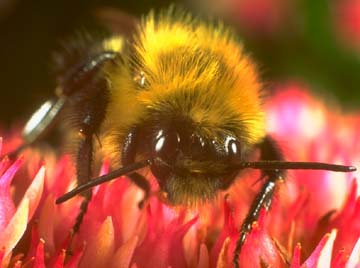Click on image for full size
Image courtesy of Corel Photography
Related links:
Astronauts May Eat Insects
News story originally written on September 3, 1999
Have you ever grabbed a worm off the pavement after a long rain and taken it to school for lunch? Or maybe you once snatched a chirping cricket from the corner and popped it in your mouth. Sound disgusting? In several countries, eating insects is a delicacy or even a necessity. Of course, they are usually cooked!
These tasty critters are full of protein, which makes them a very healthy snack. This fact alone raises the possibility of one day taking a bucket of bugs into space. It would be very difficult for astronauts to bring a cow aboard, likewise they probably couldn't grow some corn. However, a colony of worms would be ideal for space travel. They are easily stored, and can reproduce during the flight.
"There are 3,687 species in the world of edible insects, and 400 in Mexico. They're extremely nutritional because most of their bodies are made up of proteins. They could be the foodstuff for long space journeys," said Julieta Ramos Elorduy, an insect specialist at Mexico City's UNAM university. She also wrote several cook books full of delicious bug recipes.
People in Mexico aren't waiting for the space age, they've known about these tasty insects for years. The most popular insects are bees, ants, worms and grasshoppers. Those that chow on these morsels must be careful of harmful insecticides that the bugs may carry. Some are bagging and bottling insects collected from crops that aren't sprayed with poison. "We are trying to bring some standardization into the sales process," says one of the packagers.
So the next time you're hungry and there is nothing in the fridge, why not heat up a few grasshoppers and have a healthy meal?















